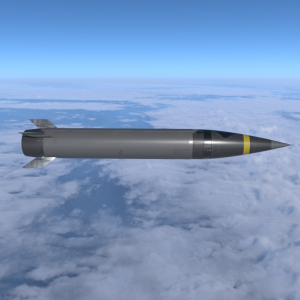On March 10, Lockheed Martin, the American defense firm, conducted a test of its candidate Precision Strike Missile, or PrSM. The test was conducted successfully at the White Sands Missile Range in New Mexico and marks the second successful flight test.
According to Lockheed Martin officials, the missile in the test performed according to specifications, exhibiting proper guidance in-flight and impacting a target point as expected. The system’s first flight test was conducted on December 10, 2019.
During the test, the missile was flown to a range of 180 kilometers. According to Lockheed Martin, this was a shorter test range than the previous trial of the missile, but included a more challenging flight profile at the shorter range.
The PrSM competing to serve as the U.S. Army’s modernized replacement for the older MGM-140 Army Tactical Missile System, or ATACMS. PrSM is one candidate, with another system being developed by Raytheon. Raytheon’s system is known as the DeepStrike.
The launch vehicle for the PrSM is the High Mobility Artillery Rocket System, or HIMARS, launcher—a system also used by the U.S. Marine Corps. A HIMARS configuration was used during the first flight test in December 2019.
The U.S. Army anticipates fielding one of the two PrSM systems being developed by 2023 as part of its Long-Range Precision Fires modernization.
According to Lockheed Martin, its PrSM “contains an insensitive munition (IM) propulsion system and IM energetic payload capable of defeating the PrSM target set.”
“It also features an open systems architecture design for maximum affordability and flexibility, is modular for future growth and HIMARS and M270 compatible,” Lockheed notes.
The system’s maximum range was long stated as 499 kilometers to comply with the 1987 Intermediate-Range Nuclear Forces Treaty, under which the United States and certain successor states of the Soviet Union, including Russia, were banned from operating any ground-launched missiles — conventional or nuclear — with ranges between 500 kilometers and 5,500 kilometers.
The U.S. left the INF Treaty in August 2019, after years of accusing Russia of violating the treaty by developing a banned cruise missile. Since the U.S. departure from INF, the range of the PRsM has been stated “499+ kilometers” by Lockheed Martin.
The system’s official maximum range is not known. The low-end range for Lockheed’s PRsM is 60 kilometers.
The U.S. Army has indicated an interest in an anti-ship variant of PrSM in the future. The system is likely to see deployment around the world, including in Asia, where it may be used in coastal defense and anti-ship roles.

































